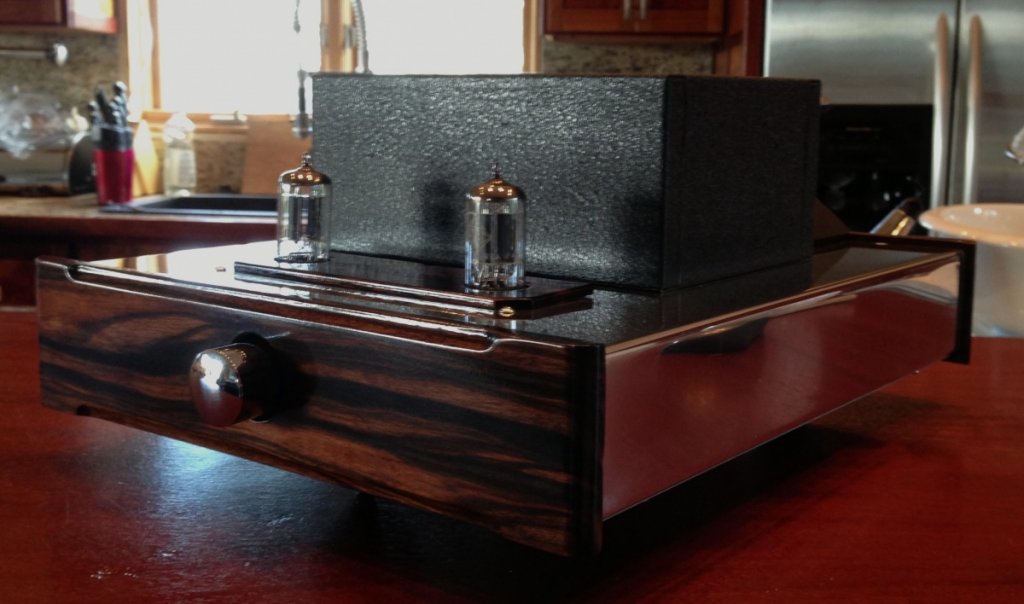
You probably are saying, "Wait a second... The Bugle is a small SS design and I see tubes!" Well this is a story of a Bugle that started modestly and through a series of upgrades, due to a little mission creep, has morphed into what is above.
A little history...
I needed a
nice and
cheap phono stage to use while my K&K audio pre was going through a few upgrades and an exterior rework. I had built a Cornet 2 a long time ago and was confident that if Jim designed the circuit it was a good bet that the sound would be up to standard so, I ordered the PC boards for the Bugle and matching power supply and had plans to put the units in an old Hammond chassis I had laying around. I built them stock and set for 60db of gain. The sound was OK but compared to the K&K it was replacing it was a bit flat, hazy and one demential. To be fair, it is being compared to a phono preamp that costs 10x as much.
But, the bones were there. It got me thinking.
First upgrade... I had a spare set of S&B step-up transformers sitting in the parts box. To run them I would need to change a few resistors so I figured while I was desoldering anyway I would take the opportunity to change the rest of the resistors and the caps. Mundorf for the caps, PRP and Kiwame for the resistors. A couple of days hooked to Jim"s reverse RIAA...The sound opened up and the hazy presentation was gone! In it's place was pinpoint imaging and a nice wide soundstage. Vocals were a bit forward. Still, there was a little upper midrange glare but it now was heads above the stock unit.
I was thinking this was it. Good enough. But...
Second upgrade... I had a blue LED going from the power supply while it was on the project board and figured out quickly that when the lights were low that blue light would drive me crazy. I like the way tubes look at night. Maybe I could kill two birds with one stone and get rid of the LED and address the upper mid glare by giving this thing a tubed output? A few quick clicks and an Aikido cathode follower and power supply board were on their way.
We are now getting away from nice and cheap and moving to
really nice and
not so cheap. (Mission Creep has set in!)
The sound with the S&B TX103's into an upgraded Bugle into an Aikido cathode follower set up for 12au7's... Excellent. Great mids, airy highs, wide soundstage and above all wonderful musical flow!
Still sitting on a piece of plywood...
Third upgrade... This thing sounds so good I can't just stick it into an old used Hammond chassis now could I? Again, a few quick emails and Mike at KM Audio Chassis had the aluminum bent. I had some Ebony in the shop so he did the metal work and I the wood work. The metal comes brushed but I took a little time and brought it to a full polish. (We are now past mission creep and into the stage where my wife is asking me sarcastically when will this "quick" project be done?)
All together and it sounds good but... What about some NOS Telefunkens or Mullards from the tube stash? Yep. They both sound excellent. Mullards for the mids, Tele's for the top and bottom punch. And while I'm at it maybe I'll stuff some Mundorf silver/oil caps in the output stage. (I had the caps in the parts bin.)
It now looks and sounds as good as anything I have had in the system. I've had it running a Dennon 103r, Shelter 501 mk2 and a Benz Ruby. All sound wonderful and the Bugle shows off each cartridge's personality!
Here are a couple of pics of the build.
Lots of holes.
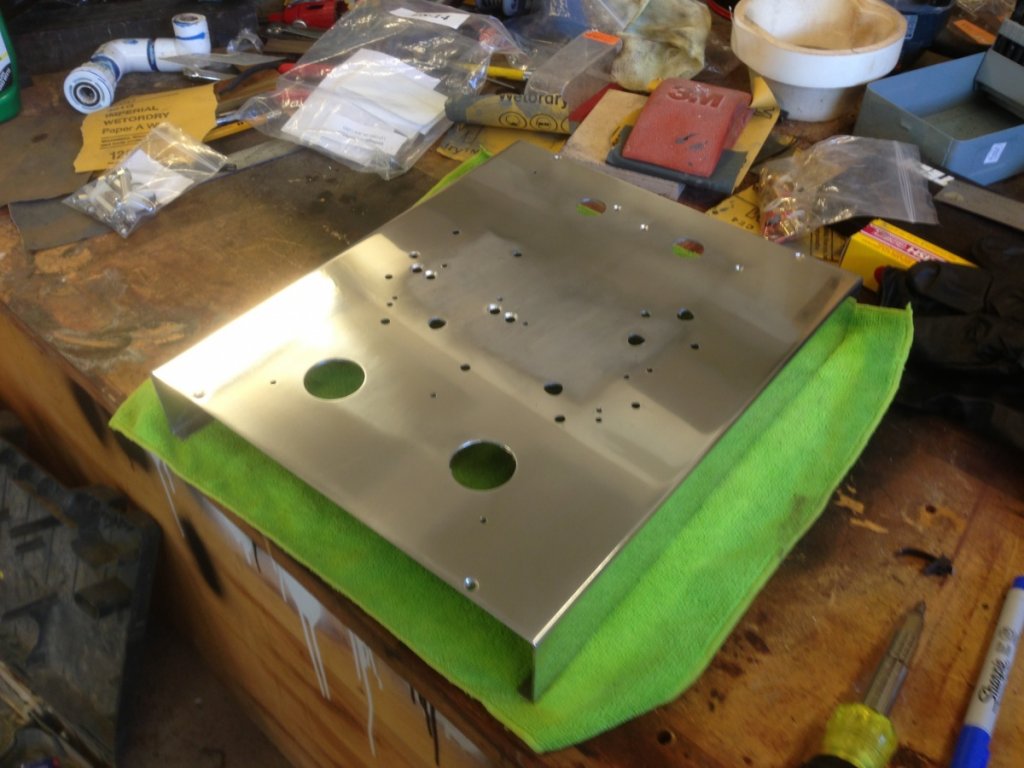
Shiny is good.
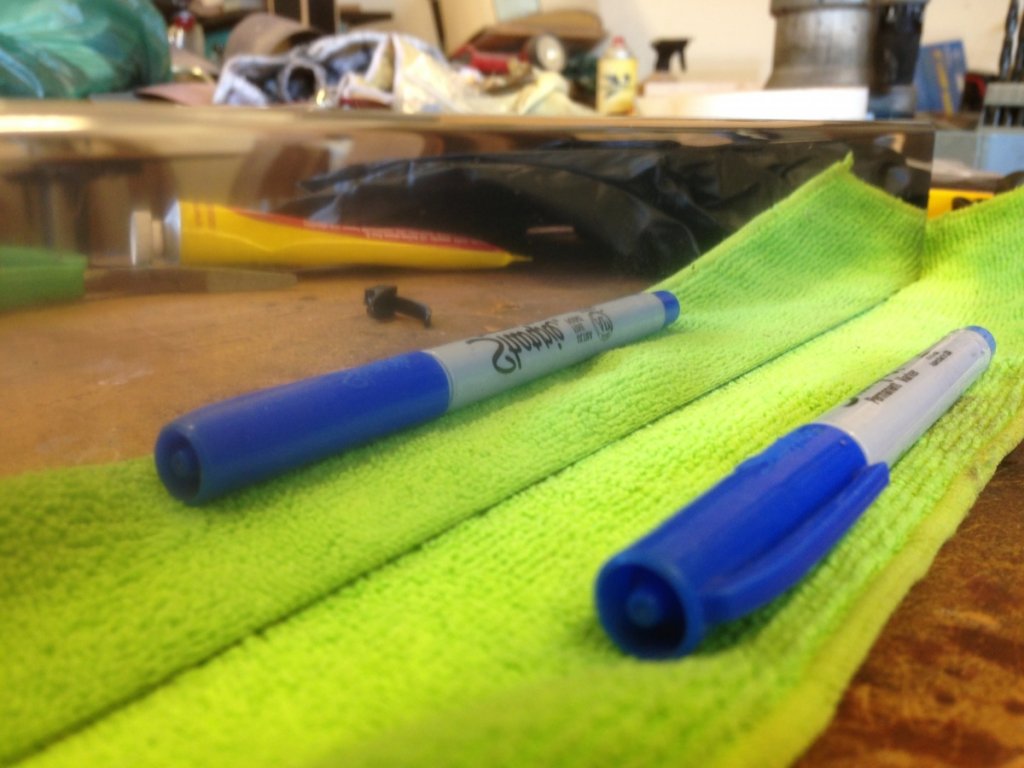
Tube Power Supply and Transformer.
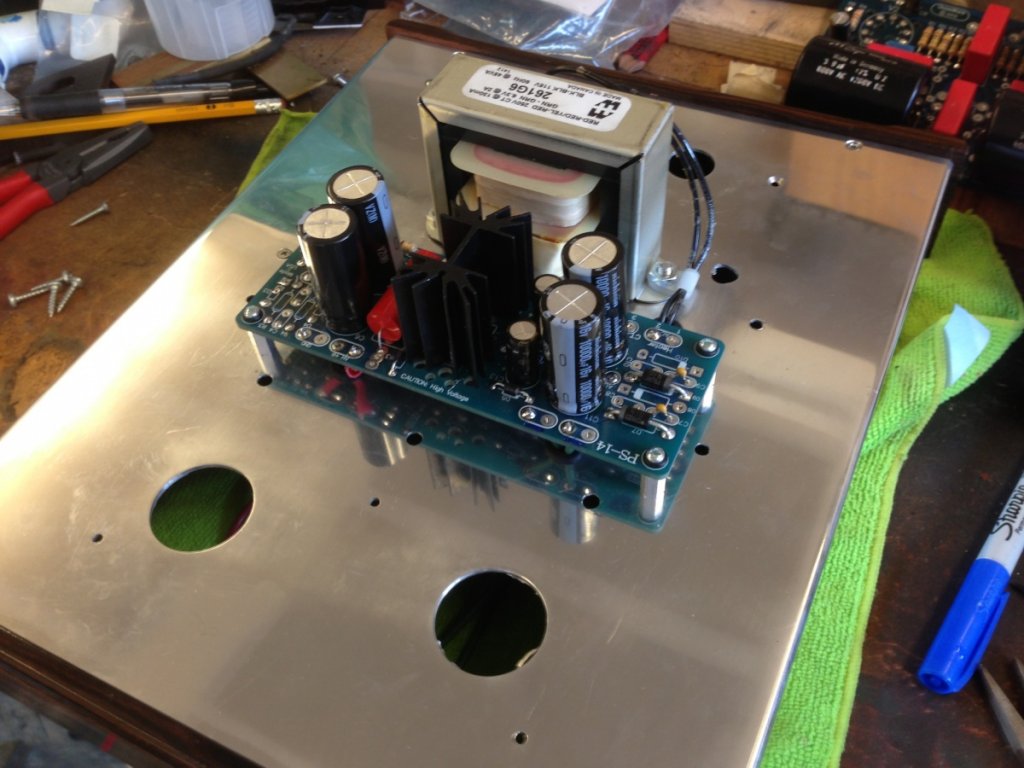
The layout. It all fits in a 10x12x2 chassis.
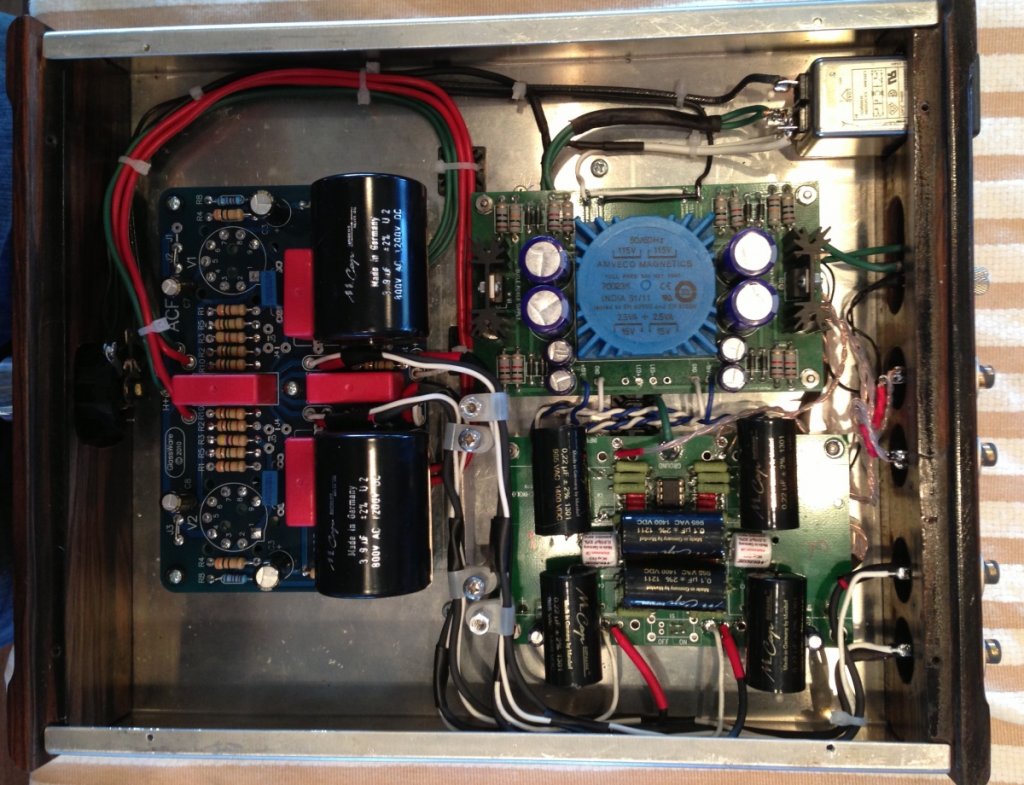
Jim's Bugle under the Mudorf caps.
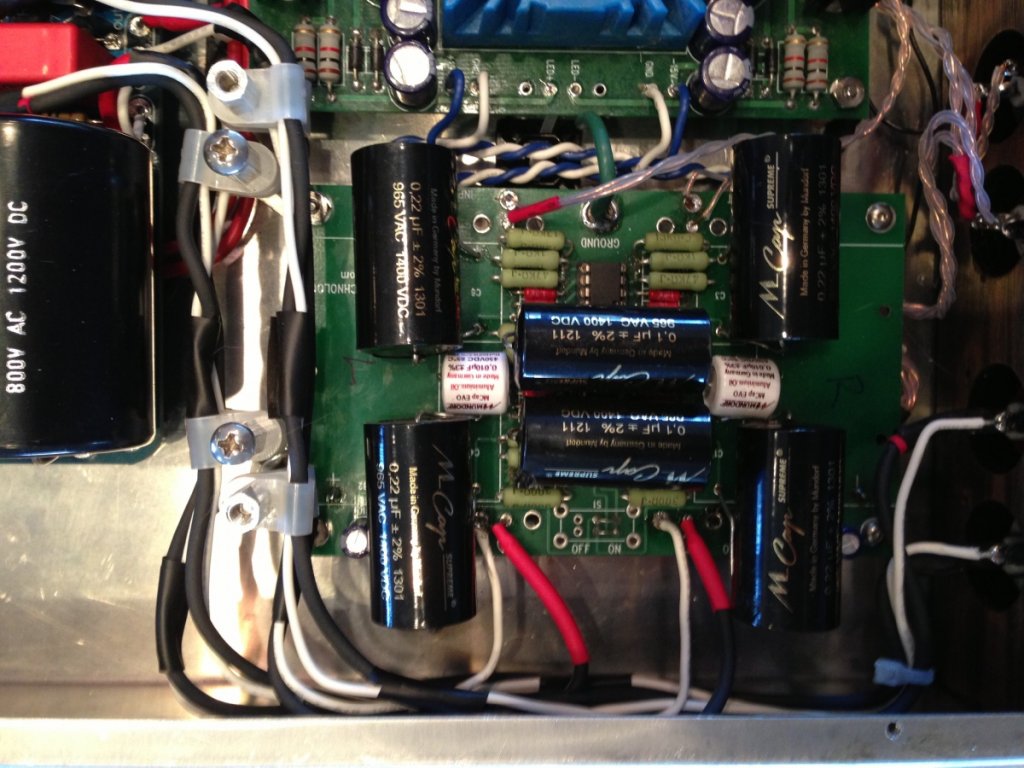
Finished!
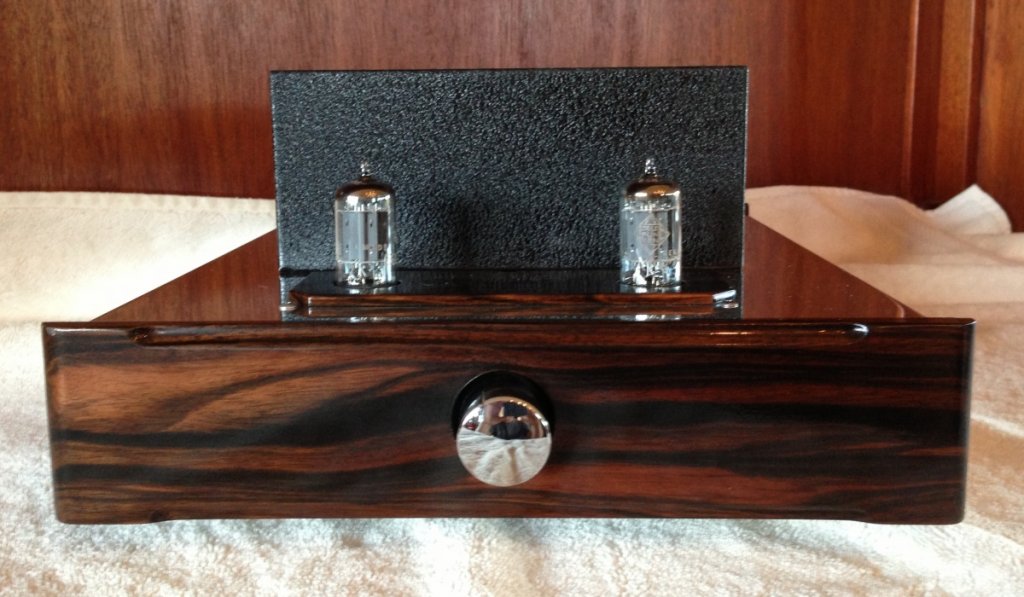
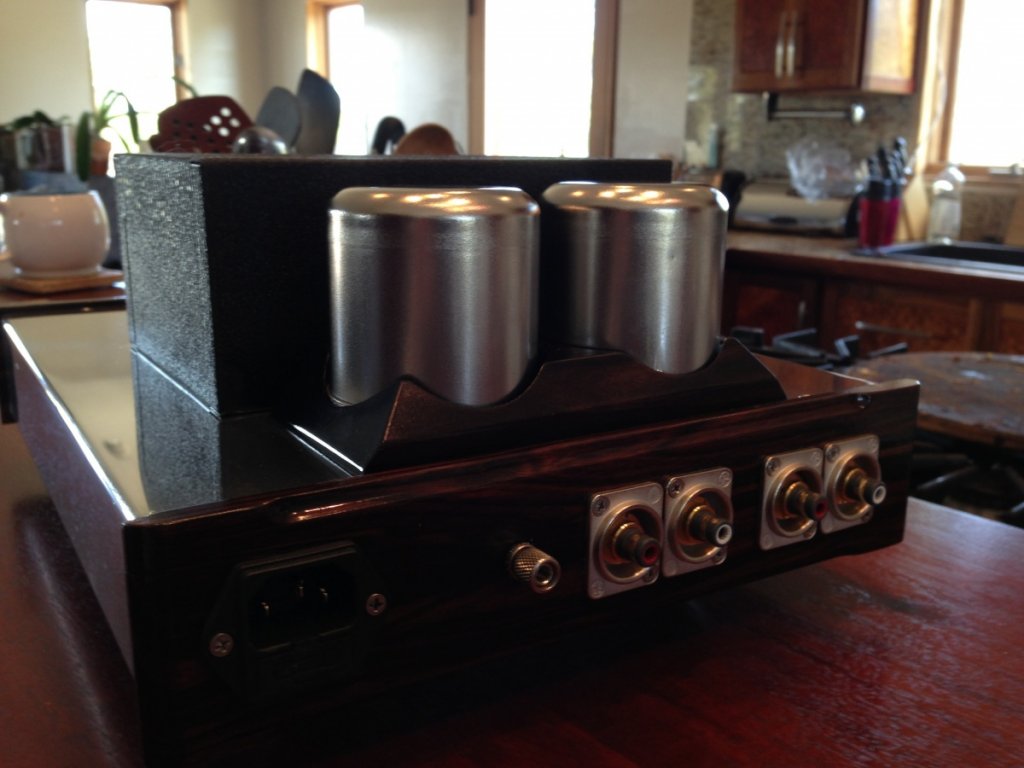
It's too bad that S&B no longer supports the DIY community. The TX-103's are really special.
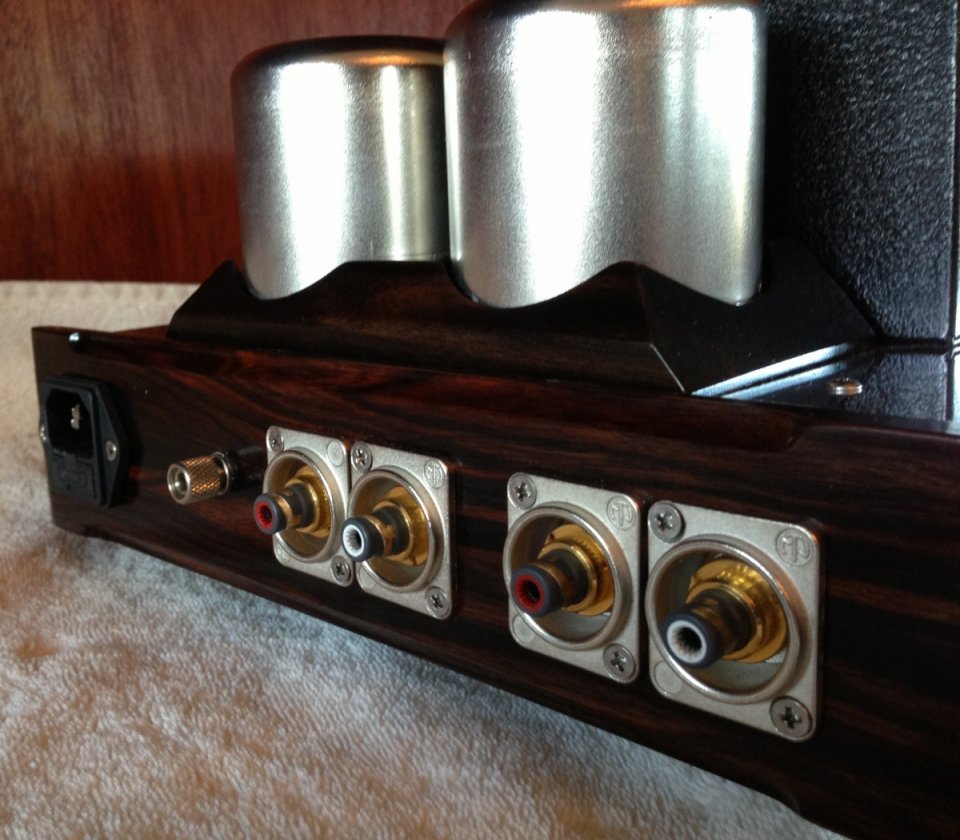
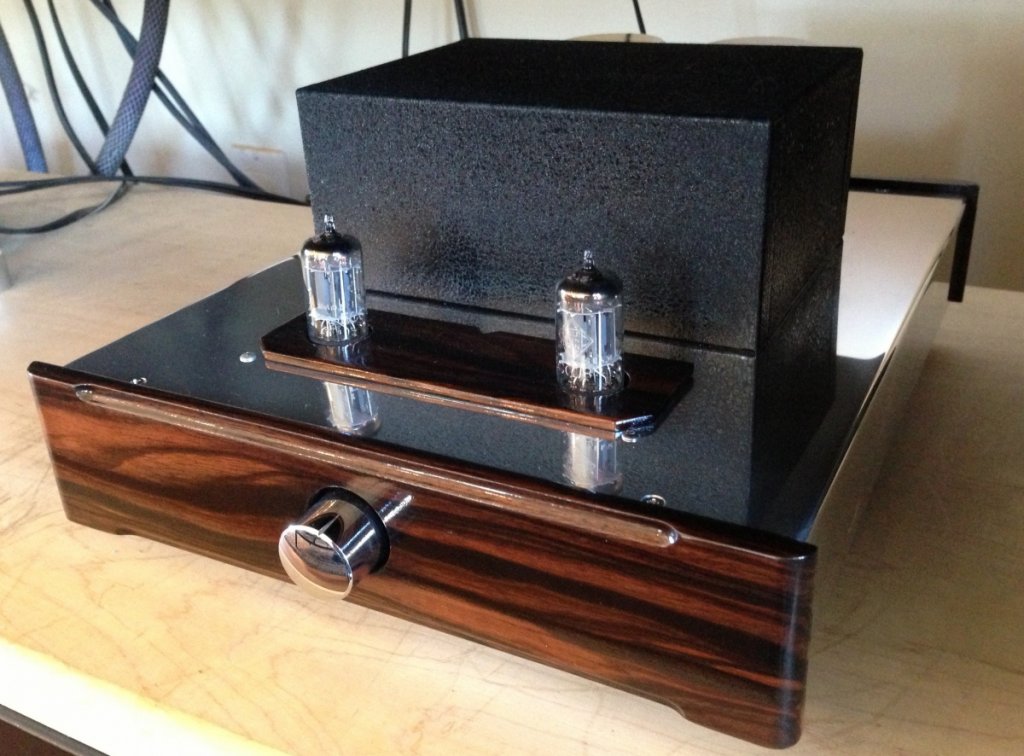
Thanks to Jim for designing such a great circuit. One so good it lead to a month of extra work and a bunch of boutique parts. It's now a keeper for the long haul!
Cheers,
C-